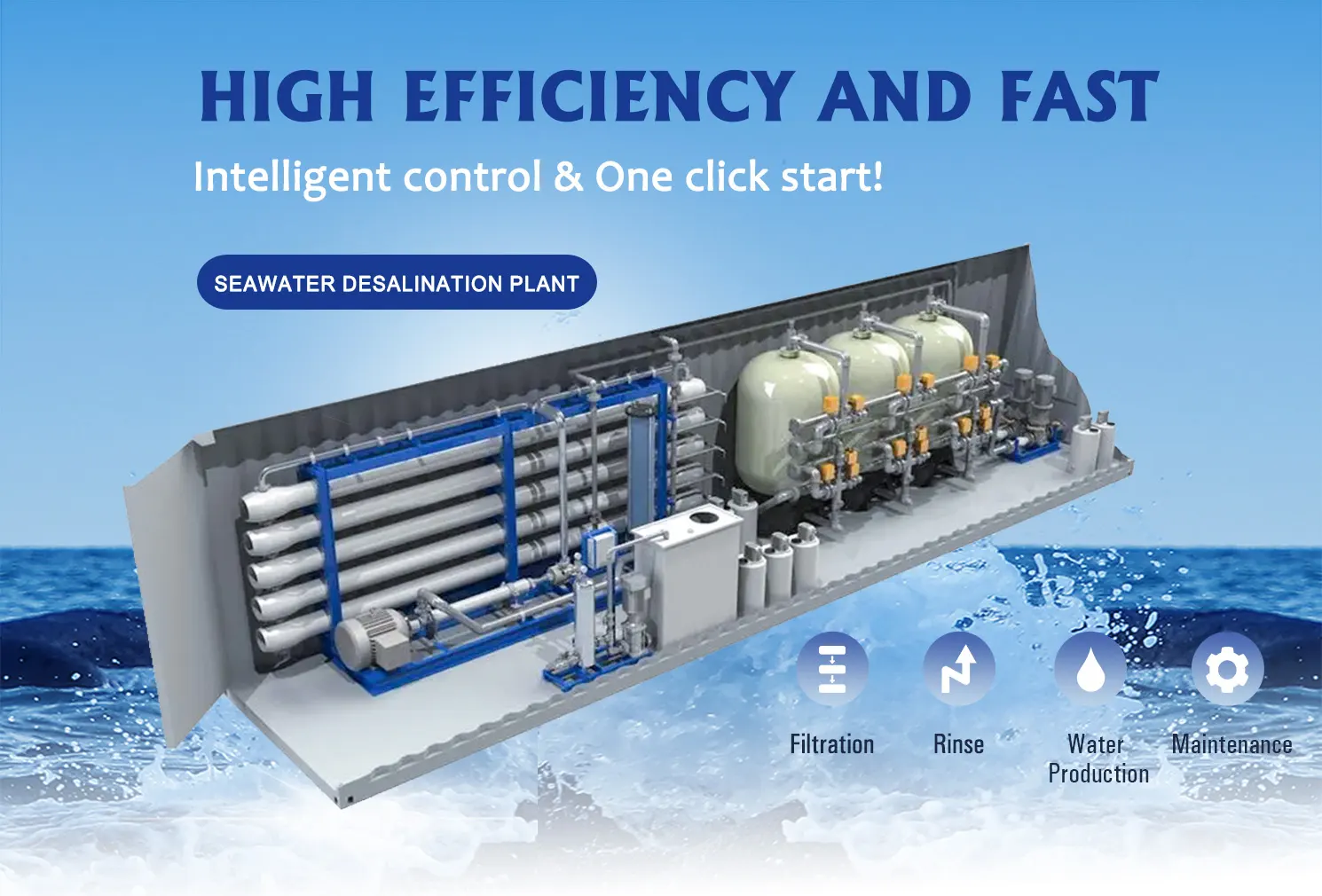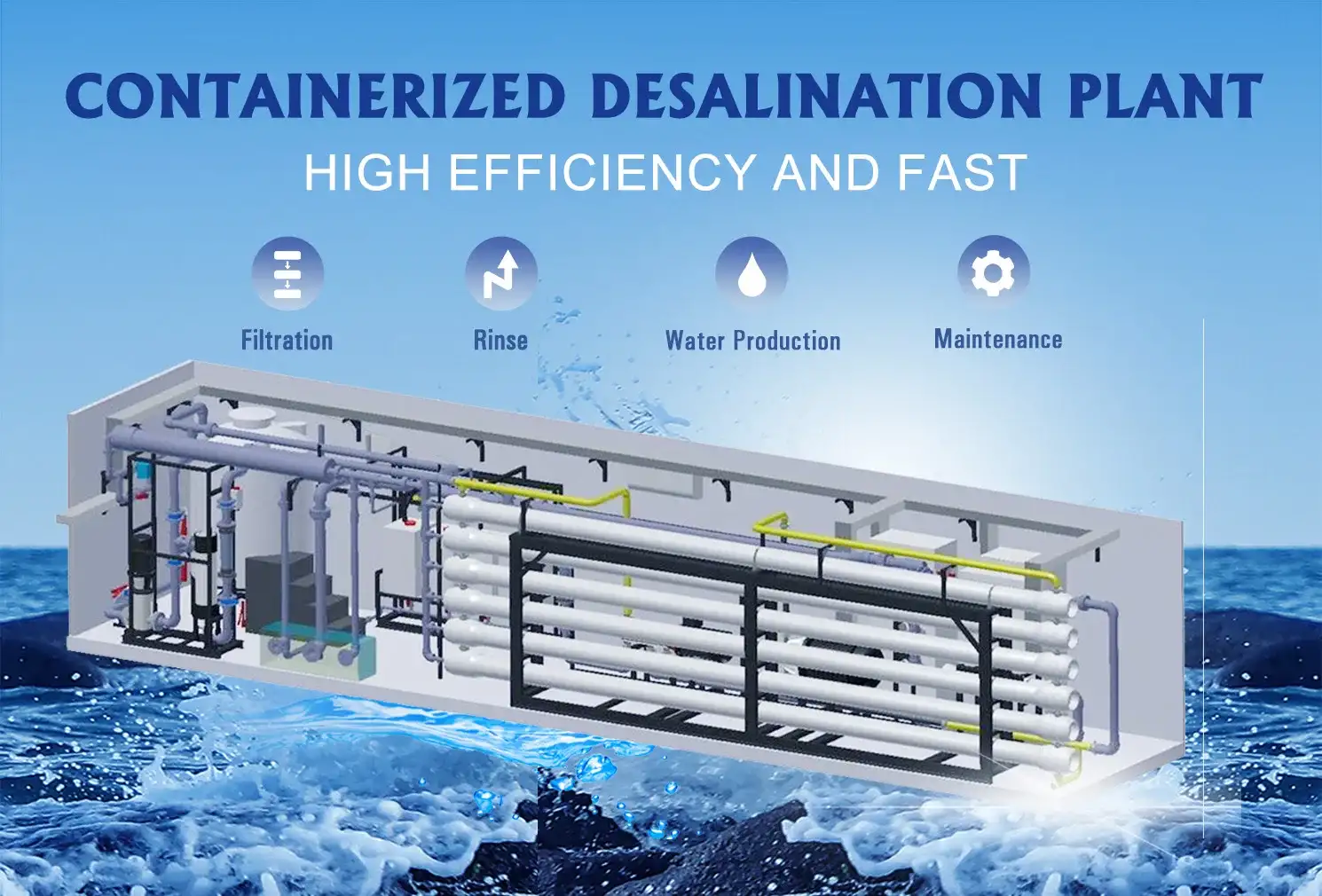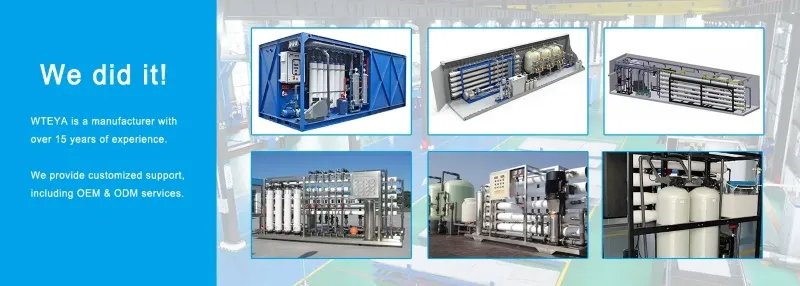Seawater Desalination Plants: Converting Transforming Saltwater into FreshWater
With the global demand for freshwater soaring, seawater desalination plants have emerged as vital solutions to water scarcity. By converting seawater into potable water, these advanced systems offer reliable, efficient, and sustainable solutions for various industries and communities. This article highlights key features, user pain points, product advantages, applications, design elements, and the overall value of seawater desalination technology.
Key Selling Points
High Desalination Efficiency
Advanced systems boast a desalination rate of up to 99.4%, effectively removing salt, minerals, and impurities and providing safe drinking water.
Rapid Water Production
Modern desalination plants can convert seawater into freshwater in seconds, meeting high-demand needs without delay.
Energy-Efficient Technology
Equipped with innovative RO (Reverse Osmosis) membranes and intelligent water management systems, these plants optimize energy consumption and reduce operational costs.

User Pain Points and Solutions
Slow Water Production
Pain Point: Traditional systems often produce water slowly, causing delays in meeting water demands.
Solution: Enhanced flow technologies ensure fast water output, eliminating long waiting times and ensuring continuous water availability.
Frequent Filter Replacement
Pain Point: Regular filter changes increase maintenance costs and downtime.
Solution: With long-lasting RO membranes offering up to five years of use, maintenance frequency is drastically reduced, lowering operational costs.
Water Quality Concerns
Pain Point: Impurities in desalinated water can compromise safety.
Solution: Dual-level physical filtration systems effectively remove harmful substances like heavy metals, bacteria, and limescale, ensuring pure, safe water.
Global freshwater shortage
Pain Point: With population growth, accelerated urbanization, and climate change, freshwater resources are facing unprecedented pressure. Freshwater supply cannot meet demand in many areas, especially in coastal, arid, and semi-arid areas.
Solution: Desalination provides a sustainable freshwater solution for coastal cities, effectively alleviating the problem of freshwater shortage by converting seawater into drinkable water.
Groundwater and reservoir depletion
Pain Point: Overexploitation of groundwater and reservoirs has led to a drop in water levels and deterioration in water quality, further exacerbating the problem of water shortage.
Solution: With the development of technologies such as reverse osmosis membrane technology and energy recovery systems, the cost of desalination has been significantly reduced, making it a more economical way to obtain freshwater.
Intensified competition between agriculture and industry for water use
Pain Point: Agricultural irrigation and industrial production require a large amount of water resources, resulting in an insufficient supply of domestic water. Water shortage not only affects the quality of life of residents but also restricts the development of the regional economy.
Solution: Desalination does not rely on precipitation and traditional water sources, can continuously provide high-quality fresh water, and enhances the stability and risk resistance of the water supply system.
Pollution of natural water sources
Pain Point: The discharge of industrial wastewater, agricultural runoff, and domestic sewage has seriously polluted the available freshwater resources, increasing the difficulty and cost of freshwater treatment.
Solution: New desalination technologies are committed to reducing energy consumption and the impact of saltwater discharge on marine ecology, making seawater desalination not only an important means to solve the shortage of fresh water but also an eco-friendly choice.
Applications of Seawater Desalination Plants
Coastal and Island Communities
Desalination plants provide a stable freshwater supply to regions with limited natural water resources, reducing dependence on imported water.
Maritime and Offshore Operations
Ideal for ships, offshore drilling platforms, and naval vessels, these systems enable continuous access to fresh water, improving crew comfort and operational efficiency.
Emergency and Disaster Relief
Portable and modular desalination units offer immediate water supply solutions during natural disasters, ensuring the safety and well-being of affected populations.
Industrial and Agricultural Use
Industries and farms benefit from reliable desalinated water for production processes and irrigation, enhancing productivity and sustainability.
Product Advantages
Customizable Solutions
Desalination plants can be tailored to specific water needs and operational environments, ensuring optimal performance for diverse applications.
Compact and Portable Design
Portable desalination units with integrated designs make transportation, installation, and operation simple, even in remote or challenging locations.
Automatic Operation and Monitoring
Intelligent control systems and dynamic digital screens allow for easy operation, real-time monitoring, and maintenance alerts, enhancing operational efficiency.
Energy-Efficient Technology
Seawater desalination plants are designed with advanced Reverse Osmosis (RO) membranes and intelligent water management systems, maximizing energy efficiency while maintaining superior performance. These next-generation RO membranes operate at lower pressure, significantly reducing energy consumption without compromising desalination capacity. Meanwhile, intelligent water management systems continuously monitor and optimize operational parameters in real-time, minimizing energy waste and ensuring sustainable, cost-effective water production. This combination of innovative technology not only lowers operational costs but also supports a greener, more energy-efficient future.

Product Design Highlights
Integrated RO Membrane System
Featuring dual-stage RO filtration, these plants ensure superior salt and impurity removal, delivering fresh and clean water.
High-Pressure Pump Technology
Upgraded pumps offer fast response times and resistance to impact, enabling high-pressure, large-volume water production for demanding situations.
Smart Water Quality Monitoring
Built-in TDS sensors and automatic desalination adjustments ensure water quality remains consistently high, adapting to varying water conditions.
User-Friendly Touchscreen Interface
A PLC touchscreen provides intuitive control, offering real-time updates on water production, filter status, and maintenance needs, streamlining plant operation.
Product Value Proposition
Seawater desalination plants not only resolve immediate water scarcity issues but also offer long-term economic and environmental benefits. Their innovative design, high efficiency, and adaptability make them essential for ensuring water security in both urban and remote areas. By addressing user pain points and delivering sustainable solutions, these systems contribute significantly to global water resource management.

Conclusion
Currently, WTEYA Group is dedicated to advancing innovations in the field of seawater desalination. Seawater desalination plants are transforming the future of freshwater access. Their ability to provide high-quality, reliable water under various conditions makes them indispensable for communities, industries, and emergency services. Investing in these advanced systems ensures a sustainable solution for meeting the world’s growing water demands.
Where to buy a desalination plant?
If you are looking for an efficient desalination plant to treat seawater and high-salinity water. Then by choosing WTEYA Group desalination plant manufacturer, you will get advanced desalination solutions to easily and quickly obtain high-quality fresh water. Whether you need a portable or small desalination plant to produce water, our desalination plants can meet your needs. Please contact us at info@wteya.com or WhatsApp: at +86-1800 2840 855 to get a detailed solution quotation.







